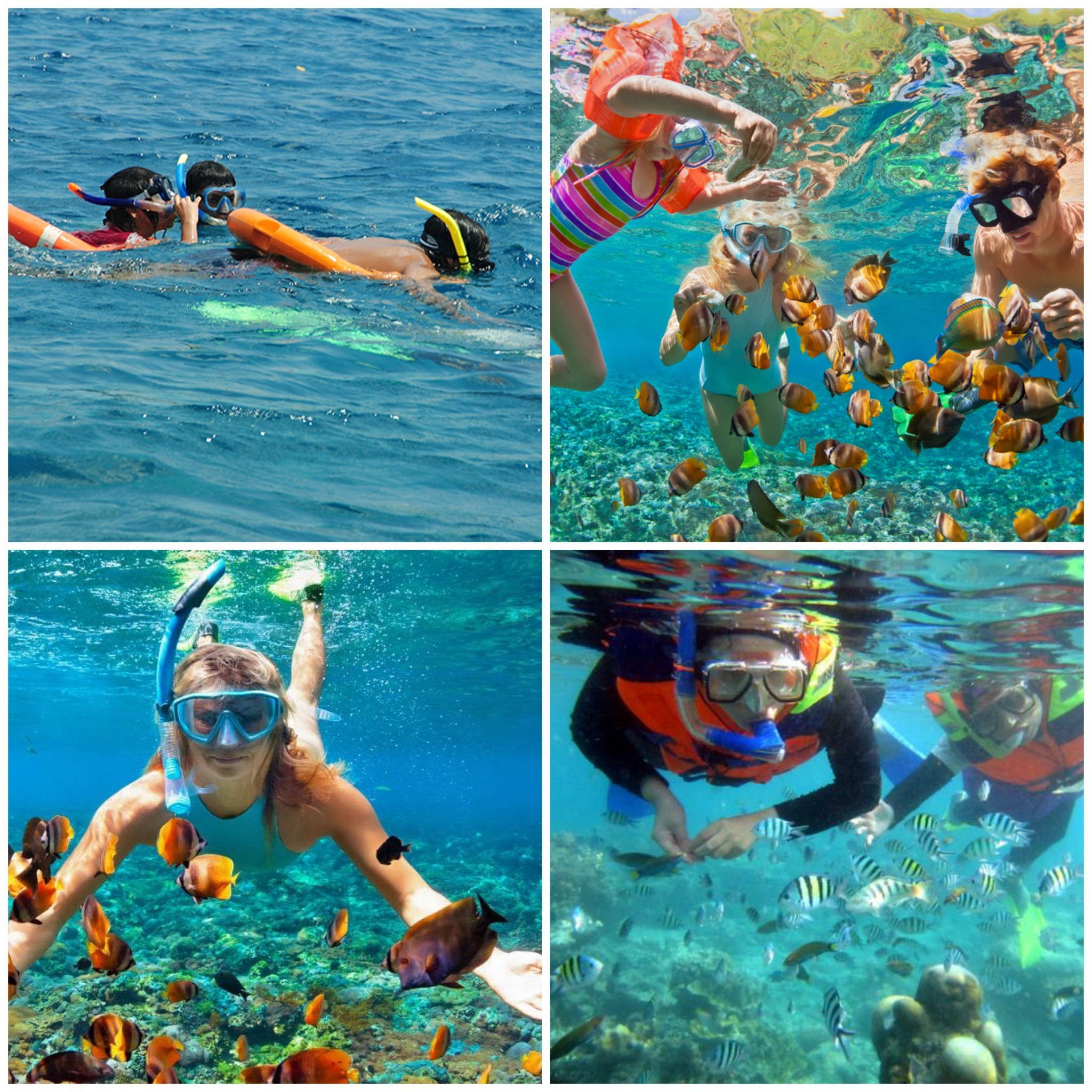Water Sports Details
Snorkeling
1,000
Per Person
Overview
Snorkeling is a popular water activity that allows individuals to observe underwater life in shallow waters with minimal equipment. Here's a detailed description:
Snorkeling Description:
1. Basics: Snorkeling involves floating on the surface of the water while breathing through a snorkel, a specially designed tube that allows one to breathe with the face submerged. Paired with a mask that covers the eyes and nose, snorkelers can observe underwater attractions without having to come up for air frequently.
2. Equipment:
- Snorkel: A J-shaped tube that is mouth-held, allowing the snorkeler to breathe while floating face-down on the surface. Some modern snorkels come with a valve that prevents water from entering the tube.
- Mask: A clear mask that provides an airtight seal around the eyes and nose, offering clear underwater vision. Proper fit is essential to prevent leaks.
- Fins: While not mandatory, many snorkelers use fins to help propel themselves with ease and navigate currents.
3. Experience: Snorkelers can explore coral reefs, schools of colorful fish, seagrass meadows, rocky coastlines, and more. Some snorkeling sites might also offer sightings of larger marine life like turtles, rays, and even dolphins.
4. Locations: Snorkeling can be enjoyed in almost any calm water location, but it is most popular in places with clear waters and rich marine biodiversity. Tropical destinations such as the Caribbean, Hawaii, Maldives, Australia's Great Barrier Reef, and parts of Southeast Asia are renowned for snorkeling.
5. Advantages:
- Accessibility: Suitable for most ages and skill levels. Even non-swimmers can enjoy snorkeling in some controlled environments or with flotation devices.
- Minimal Equipment: Unlike scuba diving, snorkeling requires minimal gear, making it easier and less expensive to try.
- Immediate Immersion: No certifications or extensive training are necessary, as is the case with scuba diving.
6. Safety Considerations:
- Weather and Water Conditions: Calm, clear waters are ideal. Avoid areas with strong currents or choppy conditions unless you are experienced.
- Marine Life: While most marine life is harmless, it's essential to be cautious and avoid touching or disturbing animals, as some can be dangerous when threatened.
- Buddy System: It's safer to snorkel with a partner for mutual safety and assistance.
7. Environmental Considerations: Snorkelers should be cautious to avoid damaging sensitive environments, especially coral reefs. Touching or standing on corals can harm them. It's essential to practice buoyancy control and be aware of one's fins to avoid accidental contact.
In Conclusion: Snorkeling is a captivating activity that provides a window into the vibrant underwater world. It's an accessible way for people to connect with marine environments, fostering a greater appreciation for ocean life and the importance of marine conservation.


